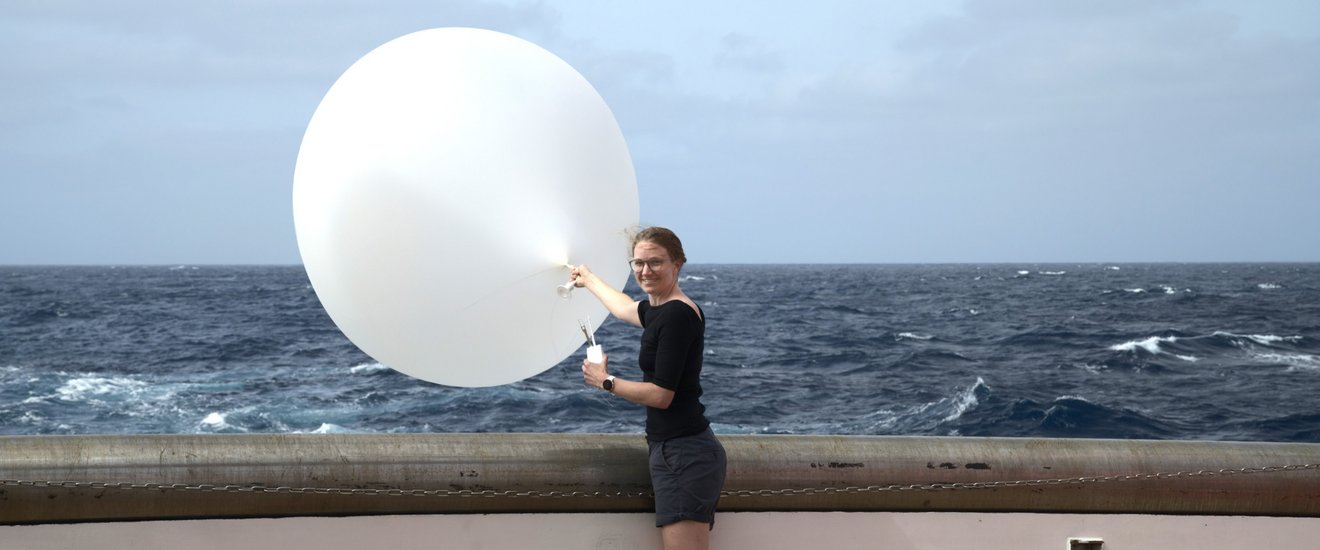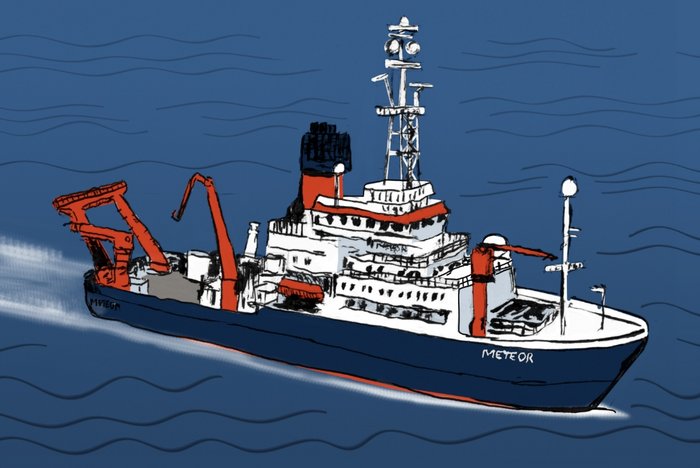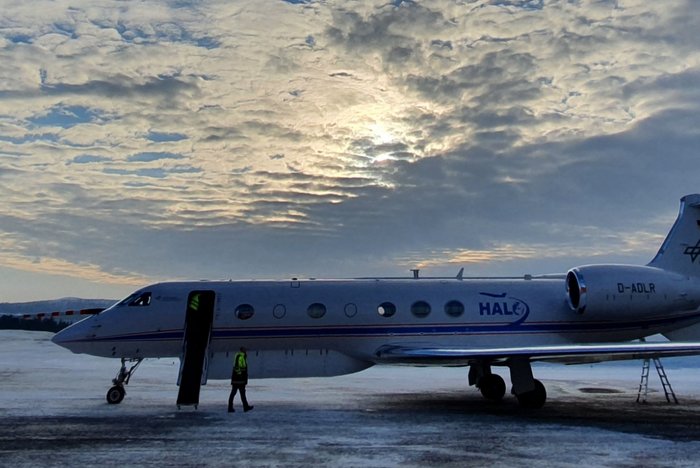In the Intertropical Convergence Zone (ITCZ), the trade winds of the Northern Hemisphere meet the trade winds of the Southern Hemisphere. It is well known that this large-scale convergence triggers the formation of deep precipitating convection. However, recent research shows that convection is not just a passive tracer of the ITCZ, but significantly influences its structure. Therefore, the goal of the BOW-TIE measuring campaign planned for 2024 is to investigate how processes on the scale of convective storms (e.g., thunderstorms) and their interaction with the ocean, shape the ITCZ in the Atlantic.
The name of the measurement campaign is derived from the planned route of the research vessel, which is reminiscent of a bow-tie. To understand the effects of convective storms on the properties of the ITCZ, the ITCZ will be crossed and measured several times. The cruise track allows cross sections of the ITCZ (including upper ocean) to be created with surrounding meteorological conditions and linked to long-term buoy measurements from the PIRATA array. The PIRATA (Prediction and Research Moored Array in the Atlantic) network is a system of permanently moored observation buoys in the tropical Atlantic that have been collecting meteorological and oceanographic data to improve weather forecasting and climate research since 1997.
During the campaign, the ITCZ will be crossed at least four times, with crossings in the western part of the Atlantic, where sea surface temperature differences are relatively small, and in the eastern part of the Atlantic, where they are relatively large. Measurements will include atmospheric and oceanic measurements, with more intensive measurements of the ocean and atmosphere boundary layers; these will allow us to also investigate the atmosphere-ocean coupling on the scale of the storm systems. Main measurements will include precipitation, moisture and wind profiles, temperature, wind speed and direction at the ocean surface, and temperature, salinity, current speed and direction in the upper ocean layers. In addition, the microphysical evolution of clouds and the interaction of aerosols with clouds under the exceptionally clean, i.e., aerosol-free, conditions in the interior of the ITCZ will be studied in detail, as these are believed to affect the energy budget at the sea surface and thus the coupling of the atmosphere and ocean. These measurements provide comparative data for storm-resolving models and help determine why they lead to an improved representation of tropical circulation systems.




